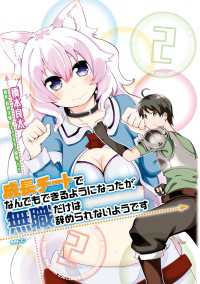基本説明
戦地での慰安講演など、歌舞伎の戦争協力についての調査。
"The role that the kabuki played during the 15-year "Sacred War" is undiscussed, even in Japan itself. Indeed, as the author of this fascinating account says, "that era of military horrors is so embarrassing or painful, even after some seventy years, that most Japanese do not wish to confront it." Yet, confronting is precisely what historian James Brandon accomplishes in this brilliant book." (Donald Richie, Japan Times)
Full Description
According to a myth constructed after Japan's surrender to the Allied Forces in 1945, kabuki was a pure, classical art form with no real place in modern Japanese society. In ""Kabuki's Forgotten War"", senior theater scholar James R. Brandon calls this view into question and makes a compelling case that, up to the very end of the Pacific War, kabuki was a living theater and, as an institution, an active participant in contemporary events, rising and falling in consonance with Japan's imperial adventures.Drawing extensively from Japanese sources - books, newspapers, magazines, war reports, speeches, scripts, and diaries - Brandon shows that kabuki played an important role in Japan's Fifteen-Year Sacred War. He reveals, for example, that kabuki stars raised funds to buy fighter and bomber aircraft for the imperial forces and that producers arranged large-scale tours for kabuki troupes to entertain soldiers stationed in Manchuria, China, and Korea. Kabuki playwrights contributed no less than 160 new plays that dramatized frontline battles or rewrote history to propagate imperial ideology.Abridged by censors, molded by the Bureau of Information, and partially incorporated into the League of Touring Theaters, kabuki reached new audiences as it expanded along with the new Japanese empire. By the end of the war, however, it had fallen from government favor and in 1944-1946 it nearly expired when Japanese government decrees banished leading kabuki companies to minor urban theaters and the countryside.""Kabuki's Forgotten War"" includes more than a hundred illustrations, many of which have never been published in an English-language work. It is nothing less than a complete revision of kabuki's recent history and as such goes beyond correcting a significant misconception. This new study remedies a historical absence that has distorted our understanding of Japan's imperial enterprise and its aftermath.








